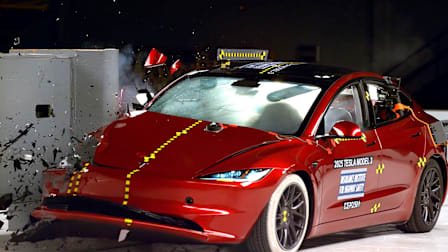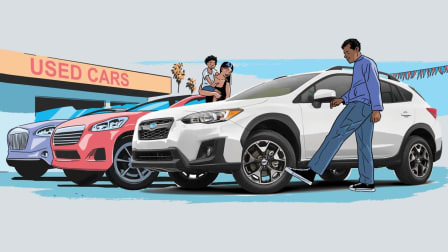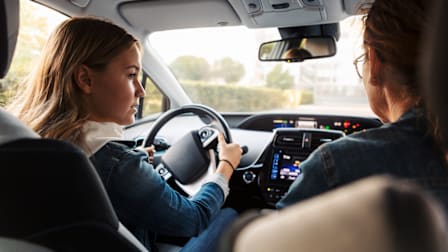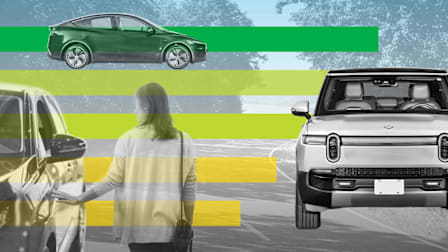Many Popular SUVs Lag Behind in Rear Seat Safety, New Crash Tests Show
An updated IIHS crash test evaluated how rear occupants fare in a crash. The results show many SUVs need improvement.
The Insurance Institute for Highway Safety (IIHS) put 13 popular family SUVs through a new crash test to see how well they protect those sitting in the rear. The results confirm that safety advances for drivers and front passengers haven’t necessarily translated into better protection for rear occupants, although several automakers told Consumer Reports they had plans for improvement.
Of the 13 midsized SUVs tested, only the 2022-2023 Ford Explorer, 2021-2023 Ford Mustang Mach-E, 2022-2023 Subaru Ascent, and 2022-2023 Tesla Model Y achieved the top rating, Good. That means those vehicles protected both front and rear seat crash test dummies from contact with the vehicle interior and forces that may cause an excessive risk of injury to the head, neck, chest, abdomen, or thighs.
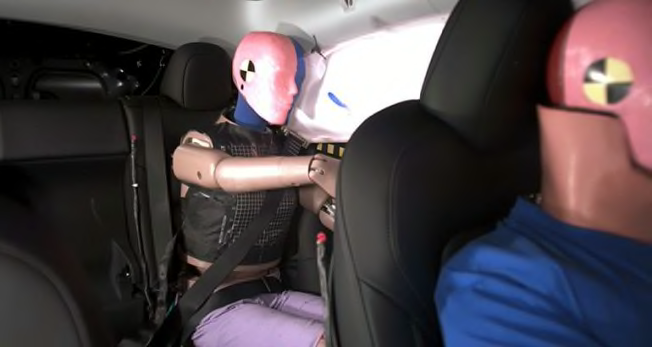
Photo: IIHS Photo: IIHS
For example, the front seat belts on most newer cars have pretensioners, which tighten the belt at the onset of a crash, and load limiters, which let the belt spool out a bit to reduce any jerking force that might injure a person’s chest. But based on CR’s tally of 2022 model-year vehicles from the SaferCar database maintained by the National Highway Traffic Safety Administration (NHTSA), only about 51 percent of mainstream models have pretensioners and load limiters in the back seat.
“One tactic for improving performance in this test is to implement advanced seat belt designs in the back seats,” says Joe Young, a spokesperson for the IIHS, which is funded by the insurance industry. Although these technologies don’t guarantee a Good score, he says that vehicles that include them generally perform better in crash tests.
Some automakers are already making those improvements. Jennifer Morrison, Mazda’s manager for vehicle safety compliance, planning, and development, told CR that the current CX-9 lacks rear seat belt pretensioners and load limiters, but that its replacement—the 2024 Mazda CX-90—will come standard with both. “IIHS crash tests are designed to set a high, ever-rising bar,” she says. A Hyundai spokesperson, Michael Stewart, told CR that the automaker has an “aggressive plan to implement countermeasures to improve restraint technologies for rear occupant protection.”
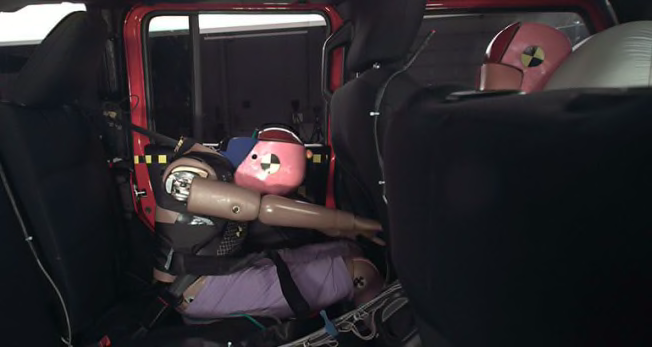
Photo: IIHS Photo: IIHS
The Honda Pilot has already been extensively redesigned since the IIHS crash-tested it, and Young says the IIHS will evaluate the new Pilot later this year. A Honda spokesperson, Chris Martin, says the 2023 model has several safety improvements, including pretensioners and load limiters for the outboard second-row seating positions.
The new results don’t change much for those who use forward- or rear-facing five-point child restraints to transport kids, Young says. Drivers “should rest assured that those seats provide a high level of crash protection,” he told CR.
All rear occupants should make sure to buckle up on every ride. In a 2017 IIHS study, only 74 percent of passengers reported buckling up in the rear seat compared with 91 percent of front-seat passengers, even though unbelted rear-seat occupants are eight times more likely to be injured in a crash and twice as likely to die compared with belted rear-seat occupants. CR also considers whether or not a vehicle is equipped with belt minders in the rear seats to help improve these differences.
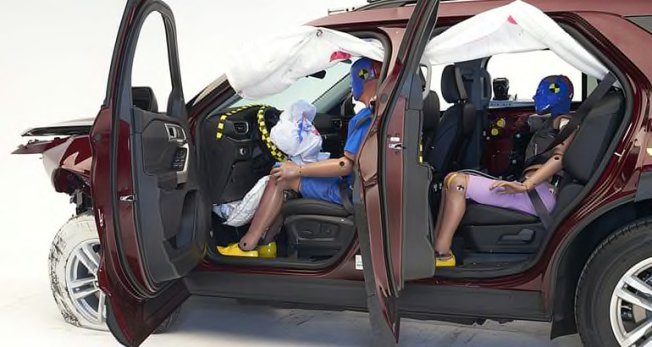
Photo: IIHS Photo: IIHS

















